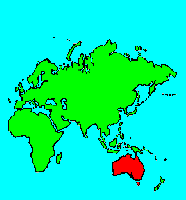SPECIES INFO
Australian lungfish (Neoceratodus forsteri) is native to Australia. This unusual lungfish can grow to about 5 feet long. It can survive on either air or clean water. This species was originally native to only the Mary and Burnett river systems in Queensland, but this has been introduced into other river systems. The scales are large and the strong pectoral fins can help move the fish on land.The lungfish order (Dipteriformes) is frequently placed at the beginning of the bony fish class. Although it is true these are ancient fish, they appear to be part of a link between fish and amphibians. Consdqeuntly, we have placed them as an advanced type of fish. The larval stage of a member of the Protopterus genus with its external gills supported on rays reminds one of the larval stage of the American mud puppy (Genus Necturus) which is a well known aquatic salamander.
The Ceratodontidae (Australian lungfish) and the Lepidosirenidae (South American and African lungfish) families belong here.
Bony fish, Class Teleostomi, are a class of chordates that include the majority of fish-like animals found on earth. They are characterized by a bony jaw and a bony skeleton. They are found in both fresh and marine waters.
Backboned Animals (Phylum Chordata) are the most advanced group of animals on earth. These animals are characterized by having a spinal cord or backbone. Most members have a clearly defined brain that controls the organism through a spinal cord. Fish, amphibians, reptiles, birds, and mammals are in this phylum.
Currently, some taxonomists believe that the fish should be divided into two groups (sharks and regular fishes) and that there are some other primitive groups in the phylum such as hagfish or lampreys.
Animal Kingdom contains numerous organisms that feed on other animals or plants. Included in the animal kingdom are the lower marine invertebrates such as sponges and corals, the jointed legged animals such as insects and spiders, and the backboned animals such as fish, amphibians, reptiles, birds, and mammals.

